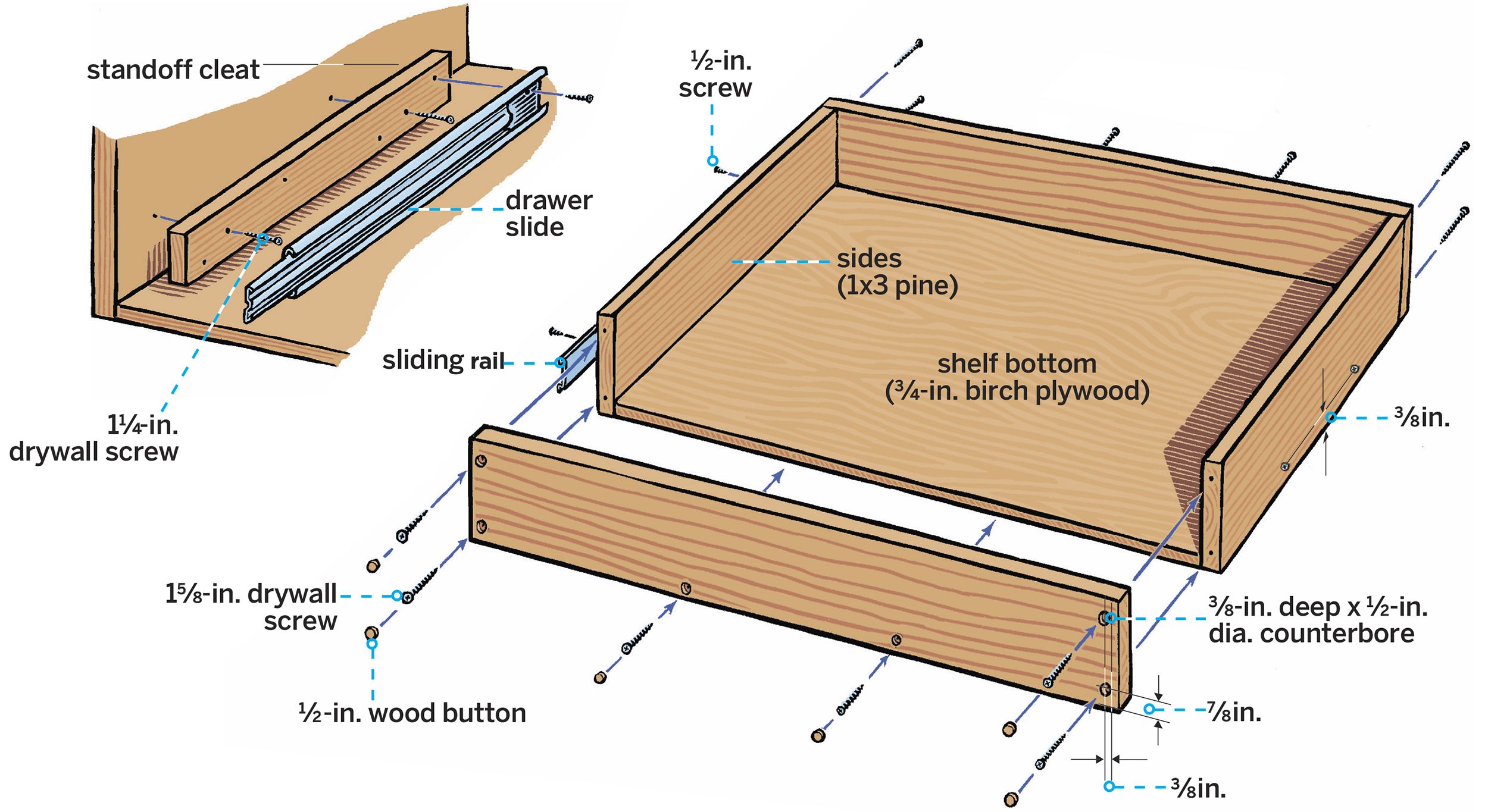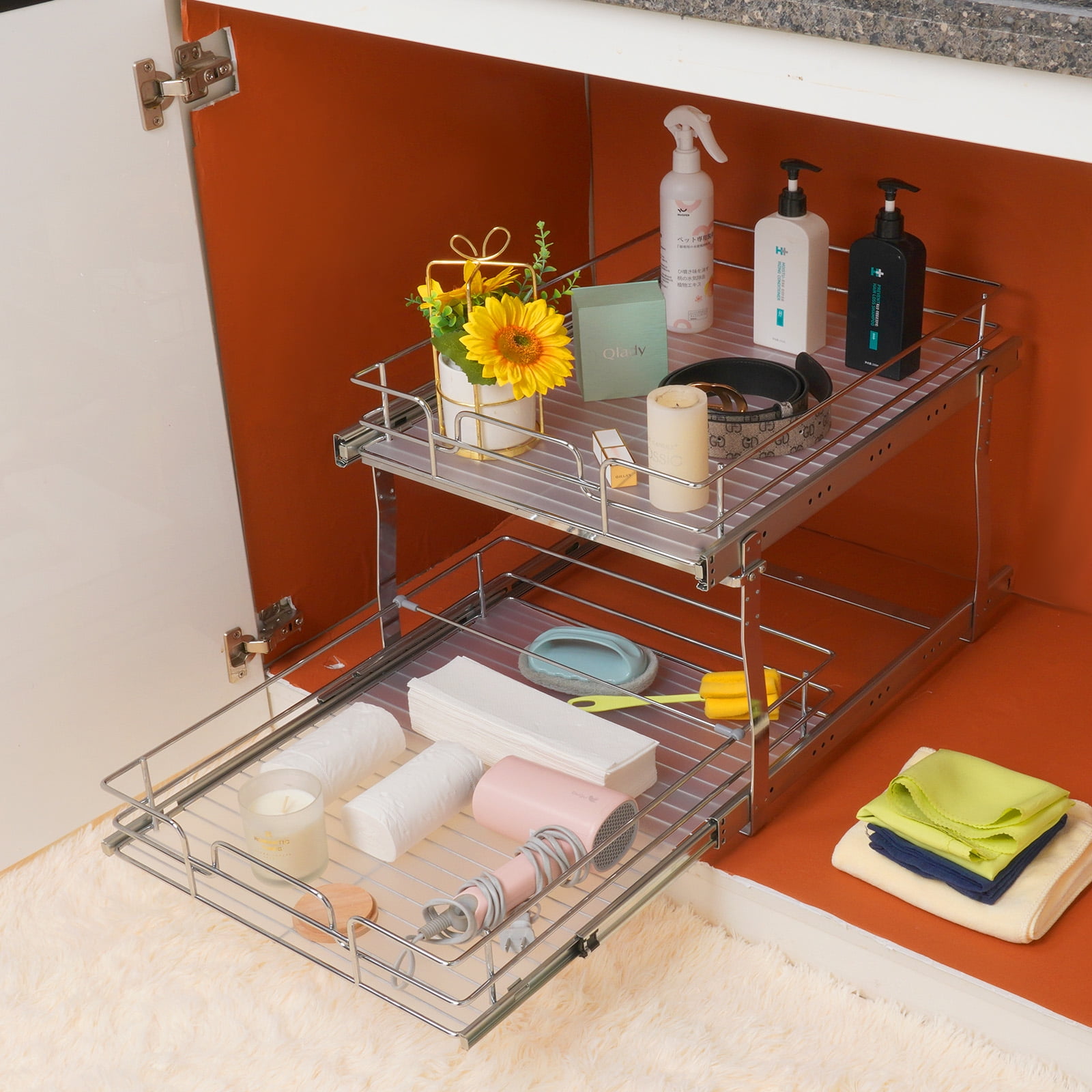Planning and Design: Making Pull Out Shelves For Kitchen Cabinets

Planning and designing pull-out shelves for your kitchen cabinets is an exciting step towards maximizing your storage space and creating a more organized and efficient kitchen. By carefully considering the design, materials, and measurements, you can ensure that your pull-out shelves are functional, durable, and aesthetically pleasing.
Design Considerations
When choosing a design for your pull-out shelves, consider the following factors:
- Type of Pull-Out: There are various types of pull-out shelves, each with its own advantages and disadvantages.
- Full Extension Slides: These slides allow the shelf to fully extend, providing easy access to the back of the cabinet. This is ideal for larger items or those stored at the back.
- Partial Extension Slides: These slides only extend the shelf partially, making them suitable for smaller cabinets or shallower storage needs.
- Soft-Close Slides: These slides offer a smooth and quiet closing mechanism, preventing the shelf from slamming shut.
- Shelf Material: Choose a shelf material that is durable, moisture-resistant, and suitable for the weight of the items you plan to store.
- Plywood: This is a common and affordable choice, offering good strength and stability.
- MDF: Medium-density fiberboard is another option, known for its smooth surface and affordability.
- Solid Wood: For a more premium look and feel, consider using solid wood like maple, cherry, or oak.
- Shelf Capacity: Determine the weight capacity required for the shelves, considering the items you plan to store.
- Heavy-duty slides: Choose heavy-duty slides for shelves that will hold heavier items, such as pots, pans, or appliances.
- Standard slides: For lighter items like dishes or spices, standard slides will suffice.
- Cabinet Depth: The depth of your cabinet will determine the size of the pull-out shelf and the amount of storage space available.
- Aesthetics: Consider the overall design of your kitchen and choose a pull-out shelf style that complements the existing cabinetry.
Materials and Tools
To build pull-out shelves, you will need the following materials and tools:
- Materials:
- Shelf Material: Plywood, MDF, or solid wood, depending on your preference and weight requirements.
- Pull-Out Slides: Full extension, partial extension, or soft-close slides, based on your chosen design.
- Screws: Wood screws for attaching the slides to the shelf and the cabinet.
- Wood Glue: For securing joints and adding strength to the shelf.
- Finish: Paint, stain, or varnish, to match your existing cabinetry.
- Tools:
- Measuring Tape: For accurate measurements of your cabinet.
- Level: To ensure the shelves are installed straight.
- Saw: A circular saw or jigsaw for cutting the shelf material to size.
- Drill: For drilling pilot holes before screwing.
- Screwdriver: For attaching the slides and shelf to the cabinet.
- Sandpaper: For smoothing out rough edges.
- Clamps: For holding pieces together while gluing.
Cabinet Measurements
Accurate measurements are crucial for building pull-out shelves that fit perfectly within your cabinets. Follow these steps to measure your cabinets:
- Measure the Cabinet Width: Measure the inside width of the cabinet at its widest point. This will determine the width of your pull-out shelf.
- Measure the Cabinet Depth: Measure the inside depth of the cabinet at its deepest point. This will determine the depth of your pull-out shelf.
- Measure the Cabinet Height: Measure the inside height of the cabinet, allowing for any existing shelves or obstructions. This will determine the height of your pull-out shelf.
- Measure the Shelf Thickness: Determine the thickness of the shelf material you are using. This will be subtracted from the cabinet depth to calculate the actual depth of the pull-out shelf.
- Measure the Slide Length: The length of the slides will be determined by the depth of your pull-out shelf, considering the thickness of the shelf material and the space required for the slides to operate smoothly.
Drawings and Diagrams
Creating detailed drawings or diagrams of your pull-out shelf design will help you visualize the project and ensure that all components are correctly sized and positioned.
Example Diagram:
[Diagram Description]
This diagram shows a simple pull-out shelf design with full extension slides. The shelf is made of plywood and is attached to the slides using wood screws. The slides are mounted to the cabinet sides using screws. The diagram also shows the dimensions of the shelf, the slide length, and the spacing between the slides.
Building the Pull-Out Shelves

Now that you’ve planned and designed your pull-out shelves, it’s time to get your hands dirty and bring your vision to life! This section will guide you through the process of cutting, assembling, and reinforcing your shelves, ensuring they’re sturdy and ready to handle your kitchen essentials.
Cutting and Assembling
Cutting and assembling the shelf components is the foundation of your pull-out shelves. This involves carefully measuring, cutting, and joining the wood to create the desired dimensions and shape.
Start by cutting the shelf boards to the desired length and width. Use a saw that provides a clean, precise cut, such as a circular saw or a table saw.
Next, cut the side panels and back panel to the appropriate height and width.
Finally, assemble the shelf unit by attaching the side panels, back panel, and shelf boards using wood glue and screws.
Slide Mechanisms
Slide mechanisms are the heart of your pull-out shelves, allowing them to smoothly glide in and out of the cabinet. There are various types of slide mechanisms available, each with its own benefits and drawbacks.
Roller slides are a popular choice due to their affordability and ease of installation. They consist of rollers that run on a track, providing smooth movement.
Ball-bearing slides are known for their durability and ability to handle heavier loads. They use ball bearings to reduce friction, resulting in a smoother and quieter operation.
Soft-close slides add a touch of luxury by gently closing the shelf, preventing slamming and noise.
Installing the slide mechanisms is a relatively straightforward process. Follow the manufacturer’s instructions carefully, ensuring the slides are properly aligned and secured to the shelf unit and cabinet.
Reinforcement and Support
Reinforcing your pull-out shelves is crucial to ensure their stability and weight capacity. This involves adding structural elements that distribute the weight evenly and prevent sagging.
Consider adding a center support brace to the shelf board, especially for larger shelves or those intended to hold heavy items. This brace will help to distribute the weight and prevent the shelf from bending or sagging.
You can also reinforce the corners of the shelf unit by adding corner braces. These braces provide additional support and prevent the shelf from warping or twisting.
Use strong screws and wood glue to secure the reinforcement elements, ensuring they are firmly attached to the shelf unit.
Finishing Touches
Finishing your pull-out shelves involves applying a protective coating and enhancing their appearance. This step ensures your shelves are durable, resistant to moisture, and aesthetically pleasing.
Consider applying a sealant or varnish to protect the wood from scratches, stains, and moisture. This will help to preserve the beauty and longevity of your shelves.
You can paint or stain the shelves to match your kitchen décor or create a custom look.
Be sure to choose a finish that is suitable for your kitchen environment and the type of wood used for the shelves.
Installation and Customization

The moment you’ve been waiting for is finally here: installing your brand-new pull-out shelves. This section will guide you through the installation process, provide tips for customizing your shelves, and address common issues that may arise.
Installation Guide, Making pull out shelves for kitchen cabinets
Installing your pull-out shelves is a straightforward process that can be completed with basic tools and a little patience. Here are the steps involved:
- Prepare the Cabinet: Begin by removing any existing shelves or contents from the cabinet. Clean the interior thoroughly to ensure a smooth installation.
- Measure and Mark: Carefully measure the width and depth of your cabinet opening. Use a pencil to mark the desired placement of the pull-out shelf brackets on the cabinet sides.
- Attach the Brackets: Use a drill and appropriate screws to secure the brackets to the cabinet sides. Ensure the brackets are level and aligned for proper functionality.
- Install the Shelves: Slide the pull-out shelf into the brackets, ensuring it’s securely seated. If necessary, adjust the position of the shelves to ensure they slide smoothly.
- Test and Enjoy: Test the functionality of your pull-out shelves by fully extending and retracting them. Once you’re satisfied, you can start organizing your kitchen!
Customizing the Shelves
Once you have your pull-out shelves installed, the real fun begins: customizing them to perfectly fit your needs. Here are some ideas to get you started:
- Dividers: Add dividers to create separate compartments for different items. You can purchase ready-made dividers or create your own using wood or acrylic.
- Baskets: Use baskets to store items like fruits, vegetables, or pantry staples. Baskets come in various sizes and materials, allowing you to tailor them to your specific needs.
- Turntables: Install a turntable on a pull-out shelf to easily access items stored in the back. Turntables are especially useful for storing spices, canned goods, or other items you frequently use.
- Spice Racks: A spice rack mounted on a pull-out shelf can create a dedicated space for your spices, keeping them organized and easily accessible.
- Pull-Out Drawers: For smaller items, consider installing pull-out drawers within the larger pull-out shelf. This allows for even more organized storage and easy access.
Troubleshooting
While installing pull-out shelves is generally straightforward, you may encounter some minor issues. Here are some common problems and solutions:
- Uneven Installation: If the pull-out shelves are not sliding smoothly, check if the brackets are level and aligned. If necessary, adjust the brackets to ensure proper functionality.
- Tight Fit: If the shelves are too tight to slide in or out, check if the brackets are properly installed and if the shelf dimensions are correct. You may need to slightly adjust the brackets or the shelf itself.
- Loose Fit: If the shelves feel loose or unstable, check if the brackets are securely attached to the cabinet sides. If the brackets are loose, tighten the screws or consider using stronger screws.
Maintenance and Care
With proper care, your pull-out shelves will provide years of reliable service. Here are some tips for maintaining and cleaning them:
- Regular Cleaning: Clean your pull-out shelves regularly with a damp cloth and mild detergent. Avoid using harsh chemicals or abrasive cleaners, as these can damage the surface.
- Lubrication: If you notice any resistance when sliding the shelves, lubricate the brackets and sliding surfaces with a light oil or silicone spray.
- Avoid Overloading: Do not overload the shelves, as this can strain the brackets and cause them to bend or break.
Making pull out shelves for kitchen cabinets – Bos, bikin rak tarik buat kabinet dapur itu keren banget, bisa bikin dapurmu makin rapi! Tapi, jangan lupa juga buat tempat sampahnya ya, biar nggak bau dan kotor. Kitchen cabinet for garbage can bisa jadi solusinya! Nah, setelah semua tertata rapi, baru deh kamu bisa masak dengan tenang dan nyaman.
Yo, so you’re thinking about making pull-out shelves for your kitchen cabinets? That’s a smart move, man! It’ll make your life way easier. But before you get started, you might wanna check out this article about whether trim has to match your kitchen cabinets: does trim have to match kitchen cabinets.
It’s a good idea to consider the overall look, you know? Once you’ve got your head around that, you can get back to those pull-out shelves. You’ll be so happy you did!
